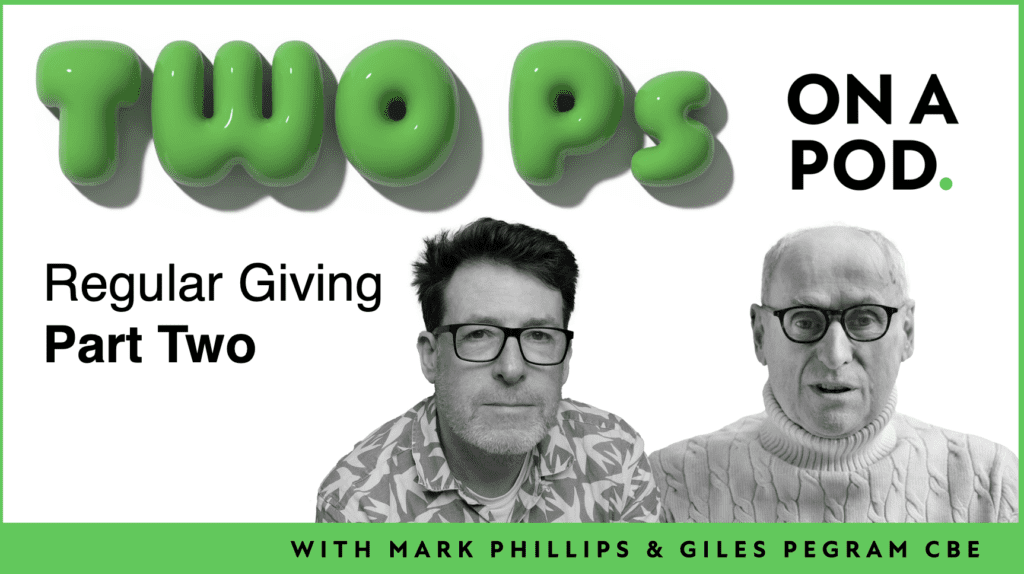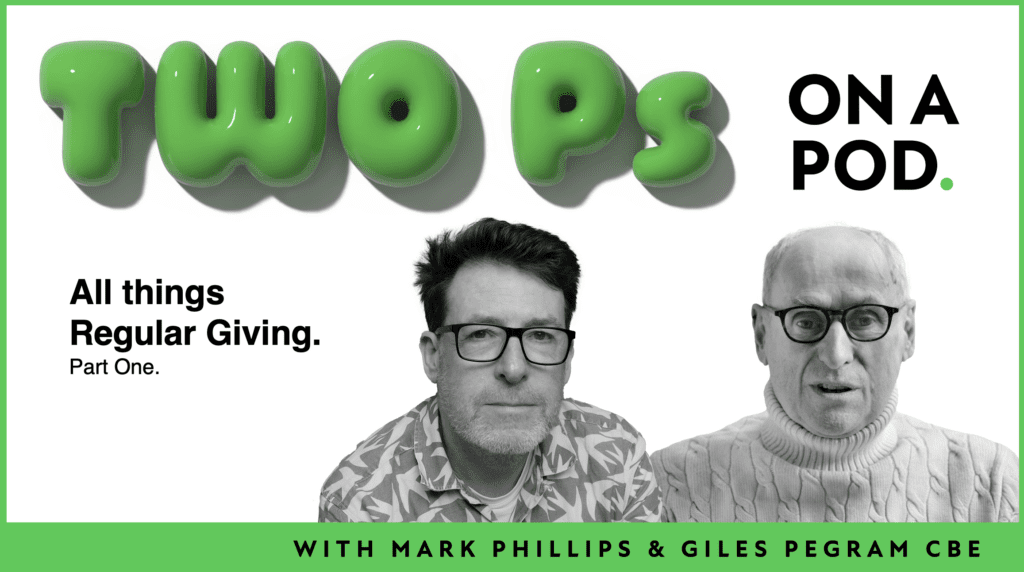How to create a great donation form
The donation form is the last great wilderness in the world of fundraising.
Too often it has been seen as an administrative document that serves little purpose other than ensuring a gift can be added to a database record and thank you letter dispatched with as little work or thought as possible.
That’s a mistake.
In that simple DL, A5 or A4 piece of paper lies a great untapped resource that can be used to increase gifts and bring a donor far closer to your charity.
It has always surprised me that the response device receives so little attention, particularly as it is the main interface between the donor and the charity. Of all the components that go into an appeal, this is the only one that someone has to interact with – whether it is ticking boxes, filling in personal details or adding a signature, the humble donation form gets some real donor attention lavished on it.
Sometimes, it is the only part of an appeal that actually gets read.
I remember a friend’s mother telling me that she would carefully open envelopes from one animal welfare charity, pull out the donation form and response envelope and discard the rest unread. This was because she found the appeals “too upsetting”. The charity was always guaranteed to get a gift. She didn’t need any details of particular projects or specific prompts. She trusted the charity and knew the donation form would sum up what they wanted her to do.
And this is the important point.
When a donor finishes reading your appeal and picks up their pen to write you a cheque, they might have decided to help, but haven’t necessarily decided how much to give.
Your donation form should sum up just why you need help and what you are asking for. It’s an opportunity to make the case for the highest gift you think is appropriate.
So as well as including…
- The donor’s name and address (with a space to amend if details are wrong)
- The response address and charity number
- Payment details (who the cheque should be made payable to and decent sized credit card boxes)
- Gift Aid declaration
…it should also include a set of justified prompts for a suggested gift.
I’m a great fan of asking people to give what you need (obviously within an achievable range). A pack created around one central idea with a fixed price is a probably the best route to increase response rates and average gift (there’s a great example of a very single-minded donation form here).
But if you aren’t so lucky to have a single minded offer, a simple approach that always works is to suggest two gifts. The first should match the previous highest or modal gift (test) and the second should be 25% higher.
Using colour, bolding the font or even circling the amount can help you get the gift you are looking for.
And you should always include an open ask box that allows the donor to contribute the amount that works for them. But rather than just writingother next to it, try using inclusive language. Bernard Ross pointed out this test, where the words Surprise us were used instead. It generated an uplift of 15 to 20% to average gift with response rates staying the same.
The other idea that I’d suggest you test is including a very high value offer. Years ago, when I ran the DM programme at YMCA England, we had a high value donor club called the Fellowship of Patrons. There were no real benefits offered to members apart from the fact that subsequent appeals and feedback were always highly personalised. The minimum value gift for membership was £700.
We simply added an extra tick box with a small description of the Fellowship to the donation form of our recruitment mailings. As a direct result, we would receive a handful of £700 donations every time it went out. This file formed the basis of our high value donor programme that generated many hundreds of thousands of pounds for the YMCA each year.
But there’s more…
 Donation forms can do far more than simply bring in money. A few well chosen questions can set the tone for the relationship between your charity and the donor for years ahead. One of the best examples of this is provided by Camphill, a charity that works with people with learning difficulties.
Donation forms can do far more than simply bring in money. A few well chosen questions can set the tone for the relationship between your charity and the donor for years ahead. One of the best examples of this is provided by Camphill, a charity that works with people with learning difficulties.
Rather than simply look at the donation form as a response device, Camphill used the reverse of their form to empower and involve the donor by offering choice. Headed, Let the Camphill Family help you, it gave donors the chance to opt out of future newsletter and appeal mailings (click on the form to enlarge).
Heresy I hear you exclaim! Surely if we gave donors the chance to not receive appeals, they would grab it with both hands. Our supporter file would be gone overnight.
It just isn’t true.
As you’ll see on Sofii (registration required but really worth it), Camphill gets great responses to their appeals and newsletters, with an average response rate of 31%. The Christmas only segment regularly generates 50% and the information only cell (who don’t receive a response device or reply envelope) consistently perform at 14%. That’s higher than many charities achieve from their warm file.
There’s a piece from the Wise Marketer (registration required) that has more details on their Christmas 2001 mailing that generated over £1,000,000 from just 78,000 supporters.
And Damian O’Broin from Irish Fundraising agency, Ask Direct recently posted some results of a mailing for The Irish Hospice Foundation. They used a donation form that offered donors the chance to cancel their direct debits.
Four of them took the opportunity to do so.
And 400 chose to increase their gift, dramatically increasing the charities income.
You can read more about the campaign and see their donation form on Damian’s blog.
The approach of Camphill and The Irish Hospice Foundation might sound counter-intuitive, but by remembering that donors give to us because they want to, we can improve our results and increase our income.
We can waste a fortune mailing donors that no longer want to support us. By asking them what they want to do we achieve two important goals…
We reduce waste and, most importantly, we offer donors a different type of relationship – one where their needs are taken into account. By doing so, we remove guesswork from our planning process. And rather than wondering what our donors want to receive, we’ll actually know.
If we respond, it seems we’ll be well rewarded.
Update: I’d like to highlight a comment from Craig Linton at Fundraising Detective. This is well worth doing…
“Another good tip for a donation form is a space for donors to write in any thoughts, ideas or feedback. You need to be careful with this as there is no point doing it if you ignore what is written, but if you respond appropriately it can be really powerful.”
Tags In
Related Posts
2 Comments
Comments are closed.
The Essentials

Crack the Code to Regular Giving: Insights, Strategies, and a Special Giveaway!

‘Tis Halloween. Keep to the light and beware the Four Fundraisers of the Apocalypse!

Why do people give? The Donor Participation Project with Louis Diez.

A guide to fundraising on the back of a postcard

What does the latest research tell us about the state of fundraising?






Another good tip for a donation form is a space for donors to write in any thoughts, ideas or feedback. You need to be careful with this as there is no point doing it if you ignore what is wrote, but if you respond appropriately it can be really powerful.
I’m always amazed at how few charities have replicated Camphill’s success. It isn’t rocket science and all the evidence shows it works. I still encounter resistance to giving donor choice in case we lose someone who might give again or people think no one will ever want to hear from us, in which case giving the choice isn’t the problem but the quality of the comms!
Hi Mark,
Hadn’t heard that tip from Bernard Ross before – very useful and something to try.
I quoted Adrian’s work in a talk last week. It just shows how important that second gift is. The same paper shows that if you can improve retention by 10% (i.e. take that 50% down to 40%) then the long term benefit is an increase of income of up to 200%.
That’s why all the things you pointed out above are so important and why choice and great comms are absolutely vital!
Regards,
Craig